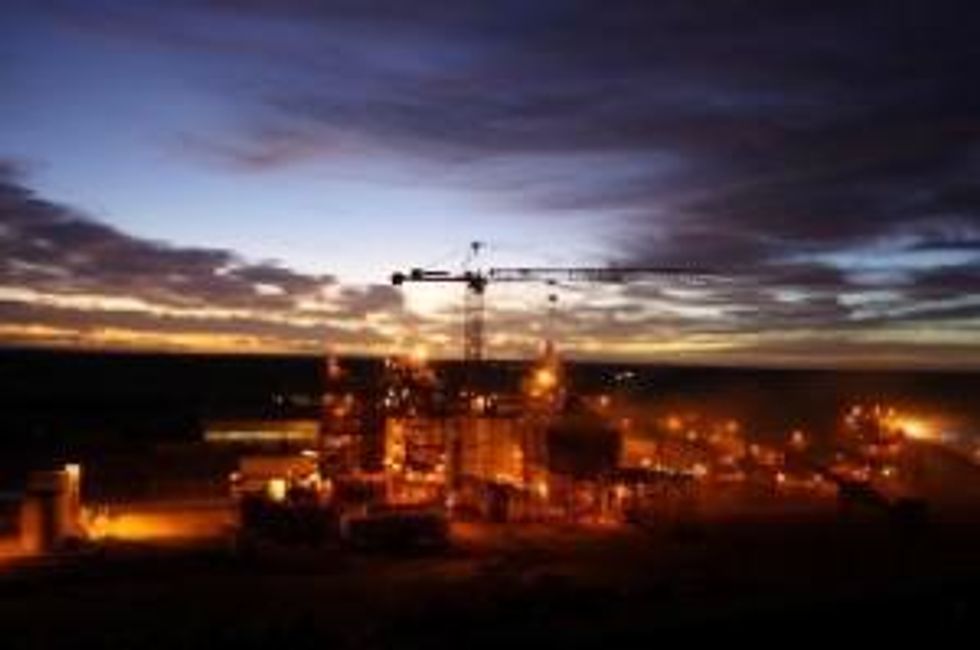The Conversation (0)
Illegal Mining Rises in Amazon Rainforest as Gold Prices Reach Records
Oct. 03, 2015 10:44AM PST
Precious MetalsWith gold prices hitting a record as a crisis drives investors into commodities, illegal mining has risen in the rainforests of South America.
This article was first published on Gold Investing News on October 18 2011.
By Karan Kumar – Exclusive to Resource Investing News
“Illegal gold mining is affecting nearly every Amazon country where gold is present,” said Rhett Butler, who founded mongabay.com in 1999, a website dedicated to wild lands and wildlife and the impact of technology on them. “Brazil might be the exception to some degree, because it has better law enforcement. It’s a pretty big problem. Mining causes deforestation and water and air pollution from mercury. It is often associated with other illegal activities, like illegal ranching, logging, and drug-trafficking.”
Jennifer Swenson, assistant professor of the practice of geospatial analysis at Duke University, said a study she conducted earlier this year found that deforestation in parts of the Peruvian Amazon had risen six-fold in recent years as small-scale miners blast and clear more of the lowland rainforest.
“These are small-time miners; there is no big ‘Goliath’ mining company to blame,” Swenson said. “The miners often lack modern technology, have limited knowledge of mining’s environmental or human health effects and rarely have safeguards to limit the release of the mercury they use to process their gold into the air, soil or water.”
Mongabay’s Rhett said he has not seen any data that exists on the number of illegal mines operating in the Amazon region. But the presence of concrete data does not take away from the reality of the existence of such mining. “The main thing governments can do is to enforce the law by shutting down illegal operations and restricting access to areas where illegal mining is occurring,” he said. “It’s pretty easy to detect illegal gold mining these days using satellite imagery and flyovers. But the political will is often lacking. In fact in Peru, politicians who have the support of illegal miners are now trying to regularize some of the illegal mines.”
An article in August reported that the newest place for mining gold illegally is the Peruvian Amazon, with more than 400,000 miners along the Madre de Dios river. The report said these miners bring in nearly a fifth of Peru’s annual 175 metric tons of gold.
“The main culprits of illegal mining are diverse,” Rhett said. “They range from the small-scale wildcat miners to the well-capitalized large-scale operators. The miners themselves are usually poor, but the backers and investors are often wealthy. Impacts are often felt downstream in areas that see almost no benefits from mining. Mercury ends up in waterways and finds its way into the fish people eat. Mining also silts up rivers, affecting water quality and transportation.”
In the Madre de Dios region, Swenson’s study found, roughly 7,000 hectares, or about 15,200 acres, of forest and wetlands were cleared at two large mining sites between 2003 and 2009. “Artisanal mining has occurred in the region since the time of the Incas, but the recent record-setting rise in gold prices has shifted its pace into hyper-drive,” Swenson said. The mining “is now plainly visible from space.”
This toxic activity, however, may become cleaner, thanks to an initiative launched last year by the UK-based Fairtrade Labelling Organisations International (FLO), which requires companies to pay sustainable prices to combat the injustices of conventional trade that hurt the poorest and weakest producers, and the Alliance for Responsible Mining (ARM), an independent initiative established in 2004 to enhance equity and well-being in artisanal and small-scale mining communities.
New Fairtrade and Fairmined gold standards mean that globally over 100 million artisanal and small-scale miners, who produce 15 percent of the world’s gold but make up 90 percent of the labor in gold extraction, will get a better price with the Fairtrade guaranteed minimum price set at 95 percent of the London Bullion Market Association (LBMA). These miners will have the opportunity to form groups to give themselves better bargaining power with traders, to get a fairer return for their produce (the FLO says that once everyone takes their percentage, the small miner may receive as little as 70 percent of the LBMA) and gain greater control over the jewellery supply chain.
Harriet Lamb, executive director of the Fairtrade Foundation said in a statement released last year when the standard was introduced: “The launch of Fairtrade and Fairmined standards for gold provides a lifeline for communities who find themselves at the mercy of unbalanced markets. Many face exploitation from middle men who pay below market prices and cheat them on weight and purity of the gold content. Our research shows that customers believe buying jewellery for a special occasion holds greater value and significance if it carried the Fairtrade and Fairmined hallmark.”






